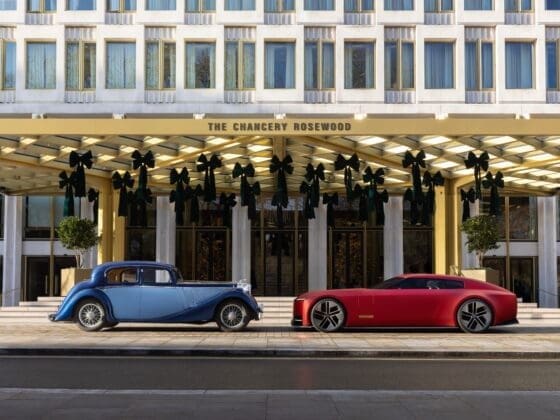For more than 80 years, Jaguar has delighted the world with its rich heritage of design, speed and performance. Jaguar’s XE 300 SPORT and XE SV Project 8 share the same bloodline and to celebrate the common DNA between the two cars, Jaguar created a 1000-metre long double helix pattern on sand by weaving the two cars across the beach at Pendine Sands, Wales, UK. Pendine Sands, having hosted motorsports for over 100 years, was the ideal choice of location to create such a large pattern.
“The aluminium-intensive body construction of the XE enabled Jaguar to create a car as special as Project 8. These two saloons share the same DNA, delivering excellent handling, peerless performance and unrivalled dynamics.” – Mike Cross, Chief Engineer, Vehicle Integrity, Jaguar Land Rover
In addition to a lightweight aluminium body structure, outstanding driving dynamics and all-wheel drive traction are some other features that are shared between the two Jaguar models. These features are also what allowed the Jaguars to create the 1000-metre long artwork with absolute precision.

The Jaguar XE 300 SPORT is powered by the 300PS 2.0-Litre petrol engine and features unique dark satin grey details including the wheels, rear spoiler, grille surround and mirror caps, along with 300 SPORT badging on the front grille and bootlid.
Known to be the most powerful Jaguar road car to date, the XE SV Project 8 tops at 200mph and reaches 60mph from a standstill in 3.3 seconds. The car has broken several speed records since its launch in 2017, setting the fastest lap time for a four-door sedan in production-intent specification around the Nürburgring Nordschleife, with a time of 7min 21.23sec and more recently, the super saloon logged a new production sedan lap record in the USA at WeatherTech Raceway Laguna Seca, Monterey, California with a time of 1min 37.54sec.















